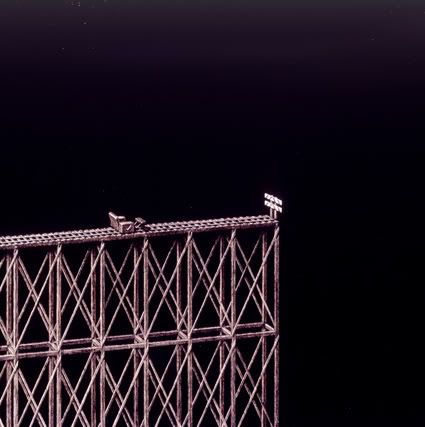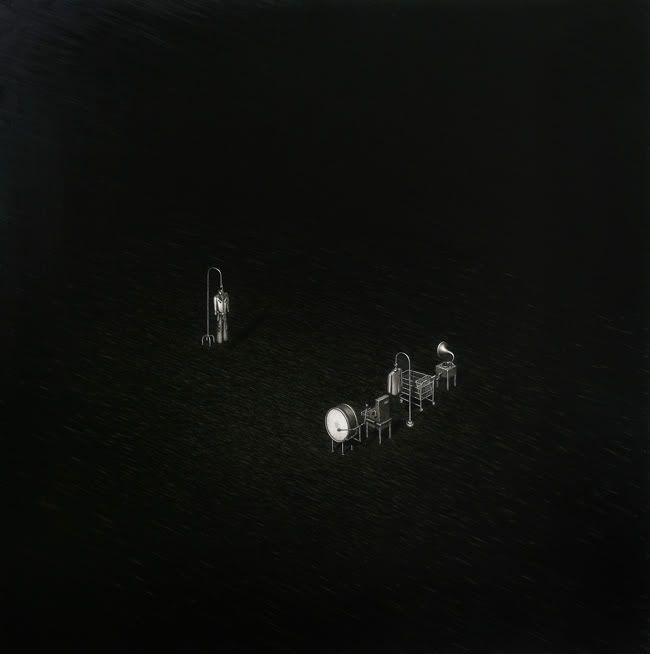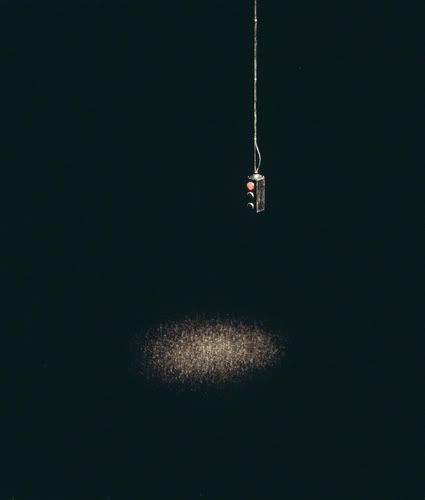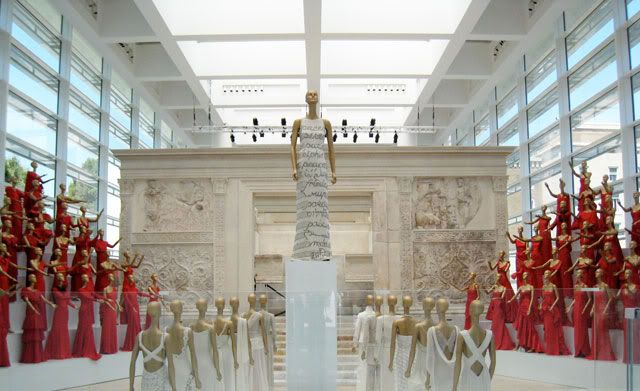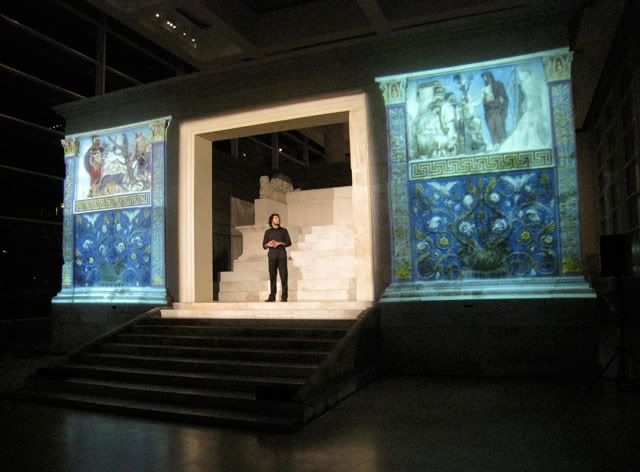I went to the ATP event last weekend, sent my review to Spoonfed Monday night, they whacked it online yesterday morning, whereupon it was taken down shortly after lunch thanks to a cross email from the ATP organisers. I can't really get cross with the section editor who pulled it. After all he does have to work with these people a lot, and as many journalists will know, there's no messing allowed with the wheels of PR-funded journalism.
I would have expected this kind of "take it down" response from a whole host of other people, but before last weekend, I certainly wouldn't have suspected the ATP dudes of harbouring this kind of control freakness over their own image. But, then again, prior to last weekend, my only experience of ATP had been vicariously - through the stories of my friends and the brilliant ATP film - and I'd looked forward to the time when I finally got to experience all that musical goodness for myself.
Now, I'm not so sure. In fact, I'm totally unsure. First, they tried to knock my credibility as a reviewer, saying that I didn't know what I was talking about, especially since I admitted as much (according to them) by stating outright that I wasn't familiar with the music of PJ Harvey or Portishead. Thankfully this doesn't disqualify me from being able to deduce that their event was shoddily managed and that the sound was appalling. I have been to a lot of festivals, gigs, and music events, though, so I can bloody well tell when one is brilliant or bullshit.
And does it really matter whether I've never listed to PJ or Portishead? I don't think so, especially given that I didn't slag off their music - I even admitted that my friends liked it (my friends! my friends! how does that make me look?) - I just said that it wasn't for me.
I also think that it's incredibly cheeky that ATP have posted an open call for feedback on their site, admitting that there were some "teething problems" and that they will address and respond to all criticisms and feedback on their website. So feedback and criticism are okay only as long as it's under the cover of emails no one else can read, not a review on a site where everyone can see it?
Despite not really enjoying their event, I wasn't remotely pissed off with ATP before this whole ridiculousness. I was looking forward to checking out one of their festivals proper in December - I'm all about compare / contrast - but now, not only am I livid, I'm also repulsed - I mean really, who makes such a fuss about a review of one of their events that it then gets taken down. Are they that insecure about their company that they can't handle one little bit of criticism. And instead of putting all the onus on me for not being a "qualified reviewer", they could at least take a bit of responsibility for their screw ups and deal with the whole thing graciously instead of like spoiled brats.
I really needed to get that out of my system.
Anyway.
Here's the review.
------------
ATP: I'll Be Your Mirror
A review in bullet points:
• I would have much rather have been at Secret Garden Party than ATP. Alas, I had little say in the matter.
• This may colour your view on my views of this festival, but before Saturday night, I'd never listened to a single song by PJ Harvey and only one song by Portishead. I suspected I'd only heard the Portishead song in a movie, which turned out to be true - "Glory Box" was on the soundtrack for Lord of War. Loads of people on Twitter were using the word "legend" to describe both bands as liberally as I suspect they pour vinegar on their late-night fish and chips. I mean legend is a strong word, one to be used with caution. Having said that, I've never been very good at keeping up with alternative rock figureheads. And anyway, I thought ATP was all about the underground! The bands doing crazy-ass musical manipulations you've never heard of. Playing in time signatures that don't exist. There wasn't a whole lot of that at this ATP, I gotta say.
• I was pissed off before I even saw a single band play. The event management was beyond incompetent. There were queues to join queues to join yet more queues to see a band playing that you couldn't hear anyway because the sound was so bad. Some douche had the bright idea for a one-way system that didn't work and only pissed everyone off when entrances and exits kept changing. Not the way to run a festival.
• If you're still reading, it must be because you actually want to know what the bands were like. Good for you.
• So. Saturday. I just missed the London Snorkelling Team, but caught a short set by DD/MM/YYYY which was fine, nothing special - like a dreamier Foals crossed with a much less angry At The Drive In, but that's hardly surprising given that they're from Canada. Foot Village next, one of the only bands I remotely dug all weekend. Four drum kits and one seriously shouty chick. Awesome. Geoff Barrow's side project BEAK> was mind-numbingly boring. I managed to squeeze in a bit of dancing (finally!) thanks to the roots reggae tunes of Black Roots. I'd been looking forward to seeing DOOM for ages, but he's got a paunchy beer-belly and a laptop, which did him no favours when faced with the terrible sound on the main stage. And so to PJ Harvey. Black dress, black feathers in her hair, nil charisma. Bad sound, again, but it's hard to tell whether that would have made any difference. My friend said her charm lies in song writing, but I don't get it. People all around me clearly did though as their eyes were glazed over in adoration and they were shouting every. single. word. Objectivity flies out the window with fans who come to see their "legends" live and will the gig to be good. The only main stage act who didn't sound terrible were Portishead, which struck me as a bit cheeky - invite loads of acts to your party but then cripple them with a shit sound set up. Their set sounded good, the visuals were impressive (live editing of gig footage), but it just don't do it for me.
• Sunday was equally lacklustre. All the bands I saw on the main stage - S.C.U.M, Liars, and Beach House - were obscured by terrible sound to the point that I couldn't tell whether I liked the songs or not. The only good gig on Sunday was Godspeed You! Black Emperor who at least had something different going on. Very cinematic, not in a bad way, even if all of their songs follow the same formula: start quiet, get a bit louder, then totally let rip for 10 minutes. I didn't bother to stick around for Portishead again on Sunday night. Frankly, I'd had enough.
• The biggest surprise was the atmosphere. I expected noisy, messy, experimental, boundary-breaking performances from the guys on stage and the guys on the floor, that's what I thought ATP was all about. Instead it was like Sunday service in the church of sissies: most of the bands were like (in softly spoken and reverential whispers), "Wow. It's like so totally amazing that Portishead invited us to be here. We're like, just, unbelievably honoured to be playing the same stage as them." The audience was equally timid and reverential. Frankly, it was boring. The whole thing was an absolute bloody bore from start to finish.






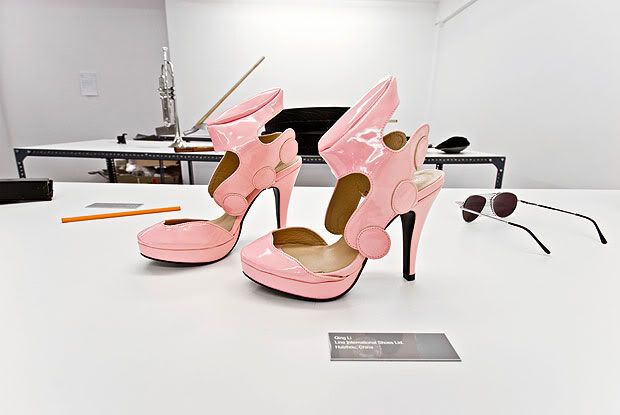









 High Easter Sourdough Bread and Homemade Goat's Cream Butter
High Easter Sourdough Bread and Homemade Goat's Cream Butter 

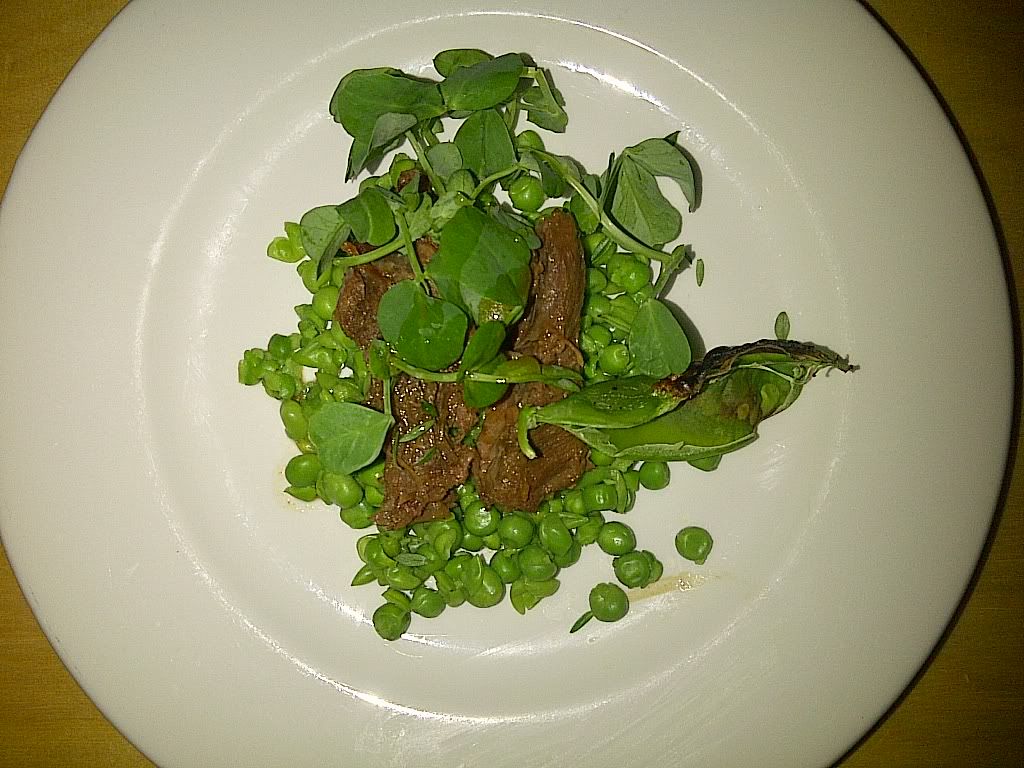



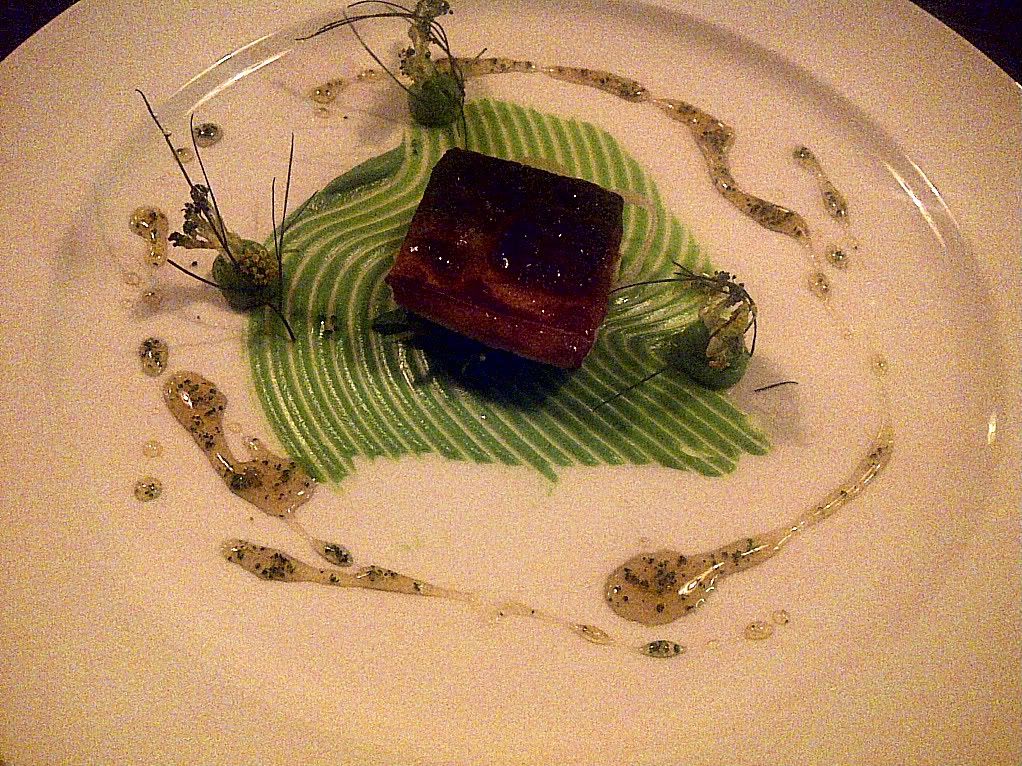





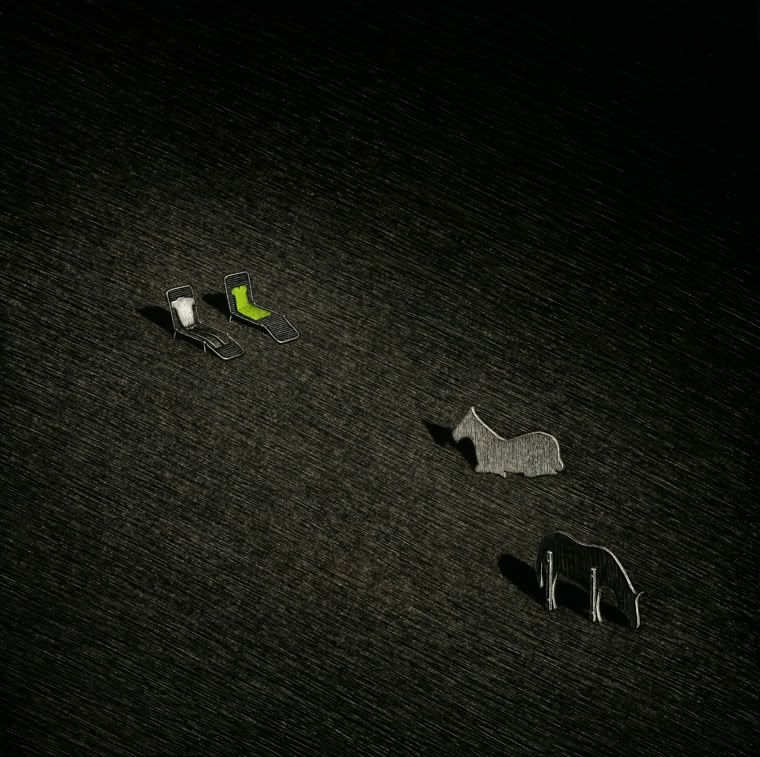

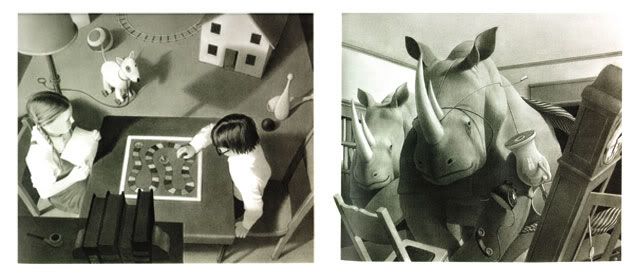 Chris van Allsburg, illustrations from Jumanji; (C) Houghton Mifflin Company
Chris van Allsburg, illustrations from Jumanji; (C) Houghton Mifflin Company